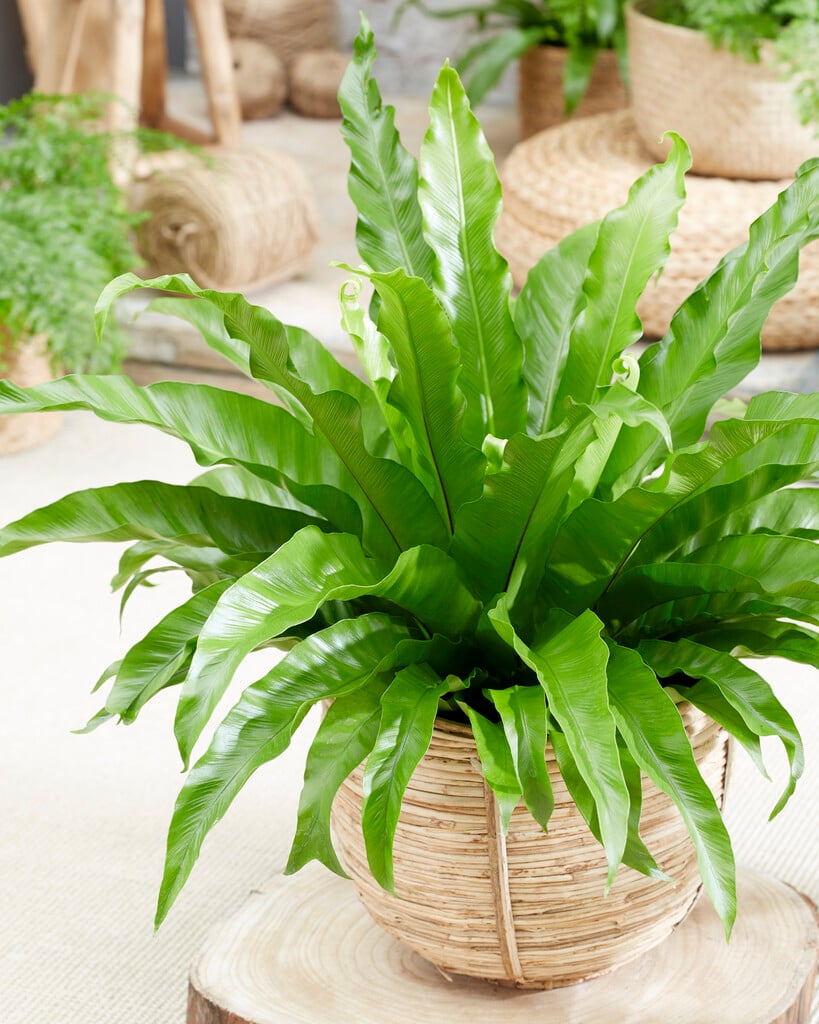Asplenium antiquum
bird's nest fern
A tender evergreen fern about 60-90cm tall, forming rosettes or 'nests' of upright, glossy, fresh green fronds that are are long and flat with a wavy edge and pointed tips, the mature fronds develop a distinctive brown midrib

Buy this plant
Size
Ultimate height
0.5–1 metresTime to ultimate height
5–10 yearsUltimate spread
0.5–1 metresGrowing conditions
Moisture
Moist but well–drainedpH
Acid, NeutralColour & scent
| Stem | Flower | Foliage | Fruit | |
| Spring | Green | |||
|---|---|---|---|---|
| Summer | Green | |||
| Autumn | Green | |||
| Winter | Green |
Position
- Partial shade
Aspect
West–facing or East–facing
Exposure
Sheltered Hardiness
H1BBotanical details
- Family
- Aspleniaceae
- Native to GB / Ireland
- No
- Foliage
- Evergreen
- Habit
- Clump forming
- Genus
Asplenium are evergreen ferns with short, usually erect rhizomes bearing a rosette of slightly leathery fronds which may be simple, pinnate to 3-pinnate
- Name status
Correct
- Plant range
- Taiwan
How to grow
Cultivation
Grow indoors in bright indirect light, in a container using three parts peat-free multipurpose compost, one part peat-free John Innes No.3, and added horticultural grit, occasionally misting the fronds for moderate humidity. Water to keep the compost moist but not soggy and use a half strength general liquid fertiliser monthly between May and August. See how to grow ferns for further advice
Propagation
Propagate by division, or propagate by sowing spores as soon as ripe at 21°C
Suggested planting locations and garden types
- Houseplants
- Sub-tropical
- Conservatory and greenhouse
Pruning
No pruning required
Pests
May be susceptible to scale insects
Diseases
Generally disease-free
Get involved
The Royal Horticultural Society is the UK’s leading gardening charity. We aim to enrich everyone’s life through plants, and make the UK a greener and more beautiful place.